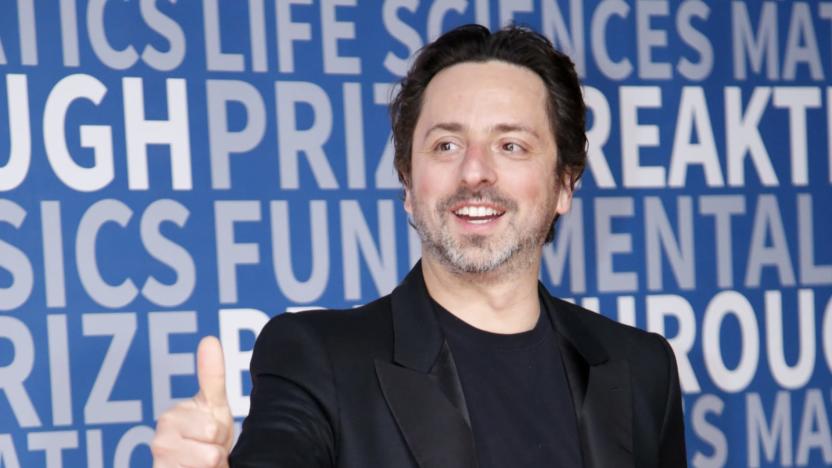Mathematics
Latest

Here’s how to deal with those badly written equations you find online
It's an easy social media trick, and one you can avoid with some high school math.

Hitting the Books: How to fight gerrymandering with math
Math is more than a bevy of equations that you learned in school and promptly forgot upon graduation — it is the language of our universe. Mathematics helps explain everything from the manner in which viruses spread to the speeds at which galaxies rotate. In Supermath: The Power of Numbers for Good and Bad, math teacher and author Anna Weltman delves into how mathematics’ impact can be felt throughout science, politics, history, education, and art.

Papercraft-inspired math turns any sheet into any shape
You might not need exotic manufacturing techniques to produce custom-shaped objects. If Harvard scientists have their way, you could start with little more than a sheet and some math. They've created a math framework that borrows from the Japanese papercraft technique of kirigami (which uses strategic cuts to produce art) to transform any sheet into any shape. Effectively, it involves designing backwards -- the intended shape is the last part of the process.

'Hidden Figures' will be made into a TV series
Hidden Figures did a lot to highlight the unheralded black female mathematicians who played a key role in the early NASA space program, and it proved a commercial success to boot. So much of a success, in fact, that it could soon extend to TV. Variety has learned that National Geographic is developing a series "inspired by" the Hidden Figures movie, which in turn was based on Margot Lee Shetterly's book. The show is still very in development and isn't guaranteed to get a commitment, but it's executive produced by Peter Chernin and Jenno Topping, both of whom handled the movie.

Breakthrough Prize awards $25 million to science luminaries
In a ceremony dubbed the "Oscars of Science," the Breakthrough Foundation handed out over $25 million in prizes to physicists, life sciences researchers and mathematicians. Hosted by Morgan Freeman, the event featured Mark Zuckerberg, Sergey Brin and other Silicon Valley notables, a performance by Alicia Keys, actors Vin Diesel and Sienna Miller, astronauts Mark and Scott Kelly and (yep) Will.i.am. The $3 million Breakthrough Prize awards are "the largest individual monetary prize[s] in science," the foundation says, and obviously life-changing. "I was totally stunned," says Lebanese-born Baylor scientist Huda Zoghbi.

Largest-ever math proof chews up 200TB of data
You've probably been asked to prove a math solution at some point, but never like this. Researchers have created the world's largest math proof while solving the Boolean Pythagorean triples problem, consuming a whopping 200TB of data -- the previous record was 'just' 13GB. The sheer size came from having to consider the sheer range (nearly 1 trillion) of possibilities involved in coloring integers. You could technically use a 68GB compressed version at home, but it'd take about 30,000 hours of processing time to crunch the data.

'A Beautiful Mind': mathematician John Nash dies aged 86
Dr. John Nash, the Nobel Prize-winning mathematician whose work included noncooperative game theory, has died aged 86. Known as Nash equilibrium, the theory is used in a broad range of fields, including economics, other social sciences, evolutionary biology as well as influencing computing and artificial intelligence. His work and life were turned into the film A Beautiful Mind, starring Russell Crowe, which won an Oscar for Best Picture in 2001, also putting focus on the stigma of mental illness. Nash's famed work in math and other fields extended beyond the game theory work that won him the Nobel Prize.

NFL player publishes math papers in his spare time
If you were an NFL player, what would you do in between games? Live the high life? Spend more time working out? The Baltimore Ravens' John Urschel does something decidedly geekier: co-author math papers. The offensive lineman recently helped publish details of a "cascadic multigrid algorithm for computing the Fiedler vector of graph Laplacians" (no, we don't get it either), which would be impressive for any aspiring mathematician -- let alone one who spends his days crushing rivals on the football field. This isn't his first such paper, but it's notable that he's keeping up his academic pursuits even after graduating from Penn State and joining the big leagues.

TI's super-slim graphing calculator shows that math can be stylish
Who said that graphing calculators were dead in the smartphone era? Certainly not Texas Instruments -- if anything, it's showing that there's still plenty of life left in dedicated math machines. Its new TI-84 Plus CE is 30 percent thinner and 30 percent lighter than the regular Plus, making for a surprisingly sleek-looking way to crunch numbers. It has six times the memory, too, so you can store more color graphs and images (and, let's be honest, a fresh copy of Drugwars for goofing off mid-class). TI hasn't divulged pricing for the Plus CE, although its new design and advanced feature set hint that it'll be relatively costly when it arrives in the spring. Look at it this way, though: you might just be the envy of your fellow students when you take this svelte plotter out of your backpack.

Mathematicians find a cheaper, slower way to get to Mars
Getting to Mars is never going to be cheap. But a couple of mathematicians have figured out how to shave some significant bucks off the price tag. Rather than fly to the red planet when its orbit brings it closest, the craft will "meet" it on the way. The strategy is called ballistic capture and involves launching the ship into a Mars-like orbit, but moving slower than the planet itself. Eventually Mars will catch up and all that fuel that would have been necessary to cruise to the planet suddenly becomes dead weight. Which means there's no need to carry it, so you can have a smaller, lighter craft. All of this adds up to a significantly cheaper journey. But there is one problem -- the journey will take much, much longer. As is, it would take six months to get to there, using ballistic capture would add several more months. It wouldn't be great for sending humans to Mars, but it could make sending future rovers much more affordable for NASA and other agency.

Physicist shows why your WiFi sucks in that one room
If WiFi can track a heartbeat through walls, why can't I get internet in my corner bathroom? Jason Cole was trying to figure that out too, but unlike me, he's a PhD student in physics. So he mapped his own apartment and assigned refraction values to the walls (shown above), then applied so-called Helmholtz equations to model the electromagnetic waves. As detailed in his (math-drenched) blog, the best spot for his router was where you'd expect: directly in the center. Since that was out of the question, he was still able to get "tendrils" of internet by placing it in the corner of the apartment. His experiment implies that even in a distant room you could eke some connectivity by judiciously shifting around your laptop. Some commenters want him to turn his equations into a WiFi mapping web service -- unfortunately, he thinks the idea is "unfeasible" due to the processing time and assumptions made.

D-Wave's quantum computer overcomes key math challenge, doesn't silence skeptics
D-Wave has long wanted to show that its quantum computing technology is the real deal, and it may have just come closer to proving its case. The company now says that its computer has calculated Ramsey numbers, or solutions to optimization-based math problems that are sometimes difficult to find using traditional systems. The computation represented one of the biggest-ever implementations of an algorithm, according to researchers. However, the feat isn't necessarily proof of quantum computing at work. As Wired explains, we've seen all of these numbers in previous experiments; the challenge wasn't difficult enough to require the involvement of a quantum computer. However, D-Wave may have better evidence in the future. Its third-generation system, due in 2015, should have enough power to find Ramsay numbers that are theoretically impossible to calculate today.

Astronaut: Moon, Mars and Beyond renamed to Starlite with beta incoming
In the wake of NASA successfully landing a robot rover on Mars recently, you might be wondering what happened to the NASA-themed MMO titled Astronaut: Moon, Mars and Beyond. The first thing that's happened to it is that the project has been retitled Starlite. Project Whitecard Studios Inc. hopes the new name will be less cumbersome and also provide a better idea of what the game is about at a glance. Development has progressed on the game as well, with a beta expected to begin sometime before the end of 2012. Prospective players can experience the game on mobile devices and browsers to minimize barriers to entry. If you're interested in a game focused on the technical side of space travel and exploring to the boundary of our solar system, keep a close watch for news on the upcoming beta. [Source: Project Whitecard Studios Inc. press release]

Alt-week 7.28.12: social mathematics, Pluto's moons and humans-on-a-chip
Alt-week peels back the covers on some of the more curious sci-tech stories from the last seven days. It's a beautiful world we live in. And, while the sweet and romantic part is debatable, strange and fantastic is not. Our universe is one populated by non-planetary celestial bodies with their own non-planetary satellites, high school social hierarchies based on predictable mathematical formulas and military-funded "gut-on-a-chips." It's a weird place filled with weird stories, and we just can't get enough of it. So, what has the last seven days brought us from the fringes of science and tech? Keep reading after the break to find out. This is alt-week.

MIT developing educational MMO funded by Gates Foundation
Is gaming the answer to the math- and science-related apathy plaguing American school kids? Some folks at MIT think so, and a new press blurb outlines how the institute is developing an MMO designed to further science, technology, engineering, and math (STEM) education. "In contrast to the way that (STEM) is currently taught in secondary schools –- which often results in students becoming disengaged and disinterested in the subjects at an early age –- educational games like the one to be developed give students the chance to explore STEM topics in a way that deepens their knowledge while also developing 21st-century skills," the release says. The title is being developed in collaboration with Filament Games, and MIT's Eric Klopfer says that it will be a powerful educational tool. "This genre of games is uniquely suited to teaching the nature of science inquiry," he explains, "because they provide collaborative, self-directed learning situations. Players take on the roles of scientists, engineers and mathematicians to explore and explain a robust virtual world." The project is being financed by a $3 million grant from the Bill & Melinda Gates Foundation.

Google brings graphing calculator functionality to search, still can't play 'Snake'
Well, Google's gone an done it, turning the Internet into one giant graphing calculator. The software behemoth has brought graphing capabilities to search, letting users input a mathematical function into the engine -- or multiple functions, separated by commas. And, this being Google, users can explore the graphs more closely by zooming in and out and panning across. According to the company, it "covers an extensive range of single variable functions including trigonometric, exponential, logarithmic and their compositions." If you know what all of that means, we're guessing you're pretty psyched about this news.

Astronaut: Moon, Mars, and Beyond developer talks educational mission
Astronaut: Moon, Mars, and Beyond has been in the news a lot lately, but just who are the folks behind the educational MMO from NASA and Project Whitecard? A new piece at Gamasutra sheds a bit of light on that as well as a few more details about the project as a whole. "I'm originally a developer," says Project Whitecard CEO Khal Shariff. "I thought, 'oh, I could be a developer for the rest of my life, or I could start my own company.'" That company has some pretty lofty goals for its first MMO, including reaching out to millions of kids worldwide and getting them interested in STEM education (science, technology, engineering, and mathematics). "We are dedicated to using game technology to do things that, when somebody interacts with the game, it maybe leaves the world better or leaves somebody smarter," Shariff says.

Scientists develop algorithm to solve Rubik's cubes of any size
A computer solving a Rubik's cube? P'shaw. Doing it in 10.69 seconds? Been there, record set. But to crack one of any size? Color us impressed. Erik Demaine of MIT claims to have done just that -- he and his team developed an algorithm that applies to cubes no matter how ambitious their dimensions. Pretty early on, he realized he needed to take a different angle than he would with a standard 3 x 3 x 3 puzzle, which other scientists have tackled by borrowing computers from Google to consider all 43 quintillion possible moves -- a strategy known simply as "brute force." As you can imagine, that's not exactly a viable solution when you're wrestling with an 11 x 11 x 11 cube. So Demaine and his fellow researchers settled on an approach that's actually a riff on one commonly used by Rubik's enthusiasts, who might attempt to move a square into its desired position while leaving the rest of the cube as unchanged as possible. That's a tedious way to go, of course, so instead the team grouped several cubies that all needed to go in the same direction, a tactic that reduced the number of moves by a factor of log n, with n representing the length of any of the cube's sides. Since moving individual cubies into an ideal spot requires a number of moves equal to n², the final algorithm is n²/log n. If we just lost you non-math majors with that formula, rest assured that the scientists expect folks won't be able to apply it directly, per se, though they do say it could help cube-solvers sharpen their strategy. Other that, all you overachievers out there, you're still on your own with that 20 x 20 x 20.

DARPA's MSEE to develop new mathematical language, race of sentient machines
The hyper-ambitious folks at DARPA are totally over the current state of military data collection, and they're pretty sure they know how to fix it: teach sensors how to think. Well, they've got an idea how to fix it, but they've put out a call for mathematician to do the dirty work. The Mathematics of Sensing, Exploitation, and Execution (MSEE) program seeks a unified mathematical language that cane teach sensors not only to collect data, but to interpret, and act on it too. The aim is to eliminate the "data deluge" that comes from ever-increasing streams of information, like cellphone intercepts and video drone feeds, allowing analysts to focus on the important stuff. Currently the onus falls on humans to interpret the overwhelming amount of information collected by military sensors, but DARPA is confident that the right algorithm could have machines interpreting the world as early as 2014. Which gives you right around three years to fulfill every fantasy you've ever had.

Apple engineer uses Lego to rebuild ancient Greek mechanism, will surely try to patent it (video)
The Antikythera Mechanism is what you call truly old school technology. Argued to be the world's oldest known computer, this ancient Greek invention was used some time circa 100BC to calculate and "predict celestial events and eclipses with unprecedented accuracy." Skipping past the two millennia in which it lay lost on a sea floor somewhere, the Mechanism has now been recreated by an Apple software engineer by the name of Andrew Carol, who has lovingly pieced 1,500 Lego Technic blocks together, creating 110 gears and four gearboxes in total. Each box is responsible for performing one piece of arithmetic, and when the resulting machine is fed with appropriate calendar data, it spits out a (hopefully accurate) prediction for the next time a solar eclipse should occur. All well and good, but we're really just amazed by the beauty of those gears working. Check them out after the break.










